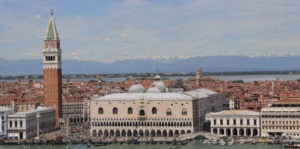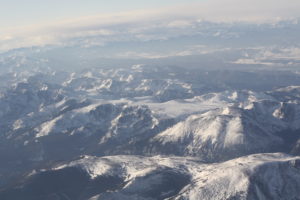From the Chicago Tribune
The State Department on Wednesday introduced shades of gray into its system that tells people about trouble spots around the globe.
The standard jargon at the State Department’s website (travel.state.gov) used to be a “warning” — something serious that would suggest extra caution (and sometimes more) — or an “alert,” which often was a red flag, sometimes temporary, telling travelers about, say, an election or the aftermath of a natural disaster.

The revised system assigns levels of advice (1 to 4) about travel as it pertains to every country.
None of levels prohibits travel. North Korea is the only country that’s off-limits to Americans without special permission.
Five states in Mexico have gotten the sternest “do not travel” advisories under the revamped system.
The five include the northern border state of Tamaulipas and the Pacific coast states of Sinaloa, Colima, Michoacan and Guerrero.
The State Department had previously discouraged travel to all or part of the five states’ territories but the new warnings are sterner, placing the drug- and crime-plagued states on the same level warning level as Somalia, Yemen, Syria or Afghanistan.
Mexico as a whole has a level-two rating, “exercise increased caution” in the new four-level alert system, because of concerns about crime. But an additional 11 Mexican states got a level-three warning, “reconsider travel.” Mexico has 31 states, half of which are under level 3 or 4 warnings.
The State Department also appears to have softened its stance on Cuba, advising people to “reconsider” travel to the Caribbean island nation under the new system.
Last September, it issued a warning that told Americans to avoid travel to Cuba in the wake of health problems reported by Havana-based U.S. diplomats and their family members. The U.S. government evacuated most employees at its embassy in the Cuban capital.
The department issued this fact sheet about the changes on Wednesday:
On January 10, 2018, the Department of State launched improvements to how we share information with U.S. travelers. These improvements will provide U.S. citizens with clear, timely, and reliable safety and security information worldwide. Under the new system, every country will have a Travel Advisory, providing levels of advice ranging from 1 to 4:
- Level 1 – Exercise Normal Precautions: This is the lowest advisory level for safety and security risk. There is some risk in any international travel. Conditions in other countries may differ from those in the United States and may change at any time.
- Level 2 – Exercise Increased Caution: Be aware of heightened risks to safety and security. The Department of State provides additional advice for travelers in these areas in the Travel Advisory. Conditions in any country may change at any time.
- Level 3 – Reconsider Travel: Avoid travel due to serious risks to safety and security. The Department of State provides additional advice for travelers in these areas in the Travel Advisory. Conditions in any country may change at any time.
- Level 4 – Do Not Travel: This is the highest advisory level due to greater likelihood of life-threatening risks. During an emergency, the U.S. government may have very limited ability to provide assistance. The Department of State advises that U.S. citizens not travel to the country or leave as soon as it is safe to do so. The Department of State provides additional advice for travelers in these areas in the Travel Advisory. Conditions in any country may change at any time.
The Travel Advisories for each country replace previous Travel Warnings and Travel Alerts. While we will issue an overall Travel Advisory level for every country, levels of advice may vary for specific locations or areas within a country. For instance, we may advise U.S. citizens to “Exercise Increased Caution” (Level 2) in a country, but to “Reconsider Travel” (Level 3) to a particular area within the country.
Our detailed Travel Advisories will also will provide clear reasons for the level assigned, using established risk indicators, and offer specific advice to U.S. citizens who choose to travel there:
- C – Crime: Widespread violent or organized crime is present in areas of the country. Local law enforcement may have limited ability to respond to serious crimes.
- T – Terrorism: Terrorist attacks have occurred and/or specific threats against civilians, groups, or other targets may exist.
- U – Civil Unrest: Political, economic, religious, and/or ethnic instability exists and may cause violence, major disruptions, and/or safety risks.
- H – Health: Health risks, including current disease outbreaks or a crisis that disrupts a country’s medical infrastructure, are present. The issuance of a Centers for Disease Control Travel Notice may be a factor.
- N – Natural Disaster: A natural disaster, or its aftermath, poses danger.
- E – Time-limited Event: A short-term event, such as an election, sporting event, or other incident that may pose a safety risk.
- O – Other: There are potential risks not covered by previous risk indicators. Read the country’s Travel Advisory for details.
We will review and update each Travel Advisory as needed, based on changes to security and safety information. Additionally, U.S. embassies and consulates will now issue Alerts to replace the current Emergency Messages and Security Messages. Alerts will inform U.S. citizens of specific safety and security concerns in a country, such as demonstrations, crime trends, and weather events.
The Department’s newly-redesigned hub for traveler information, travel.state.gov, will host all Travel Advisories, recent Alerts issued for each country, and an interactive map in mobile-friendly formats. Country pages on the site will continue to include all travel information currently available, including details about entry/exit requirements, local laws and customs, health conditions, transportation, and other relevant topics.
To receive security and other important updates while traveling, U.S. citizens can enroll their travel plans in the Smart Traveler Enrollment Program (step.state.gov), and follow us on Twitter (@travelgov) and Facebook (facebook.com/travelgov).
This article was originally published in the Chicago Tribune. In our crazy world, there are many warnings about travel. If you’re going to travel, it’s best to be informed about your destination. This is not cause for alarm…just information.
As always…travel safe and pay attention. It really doesn’t matter if you traveling to a far away destination or a local one.







